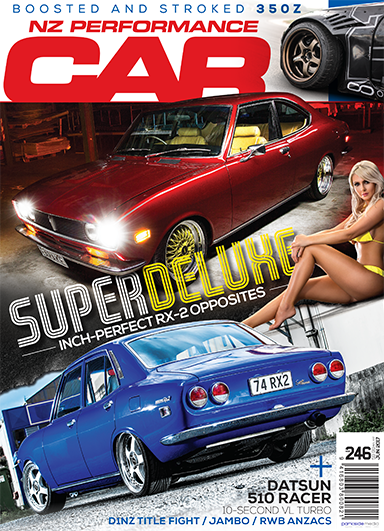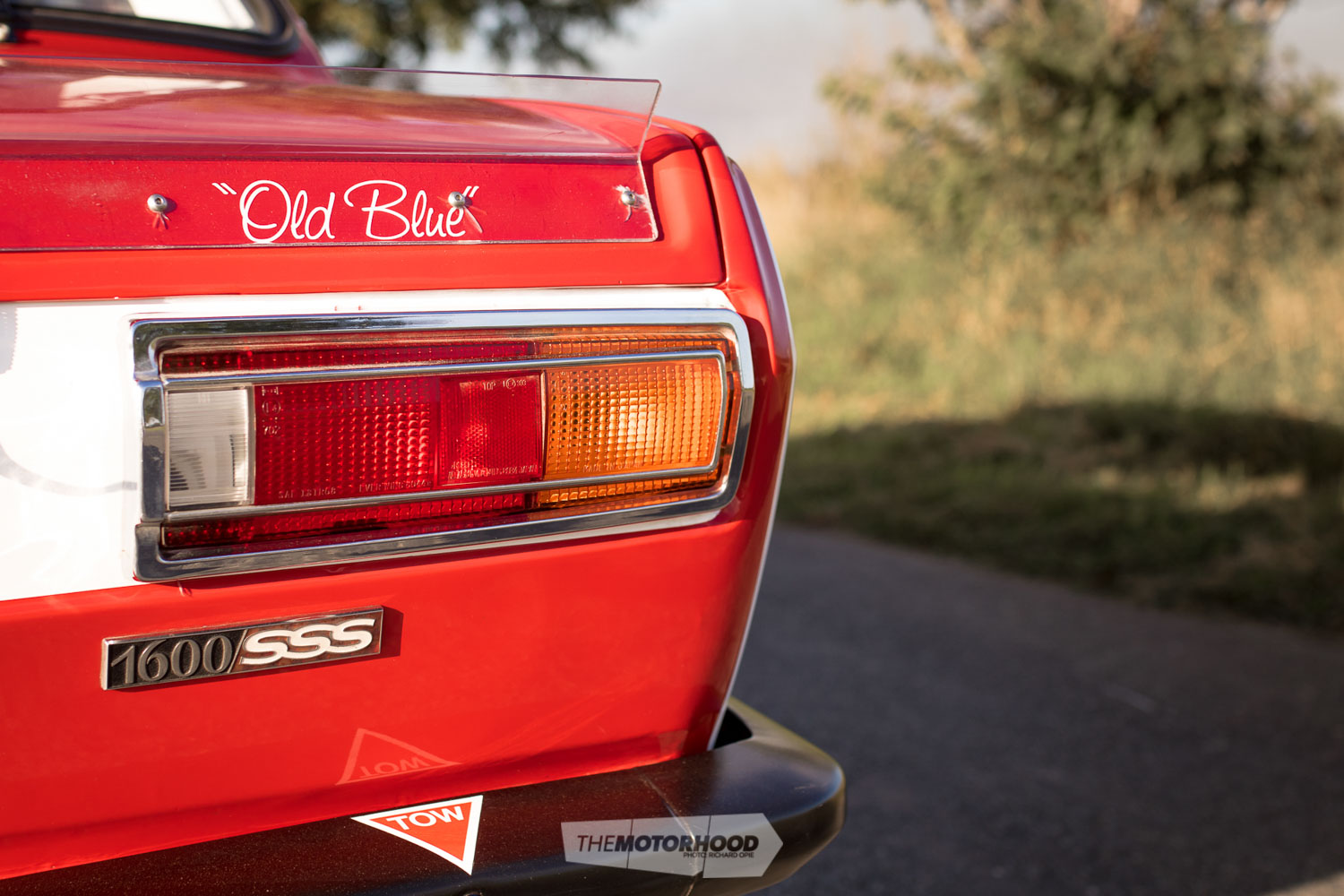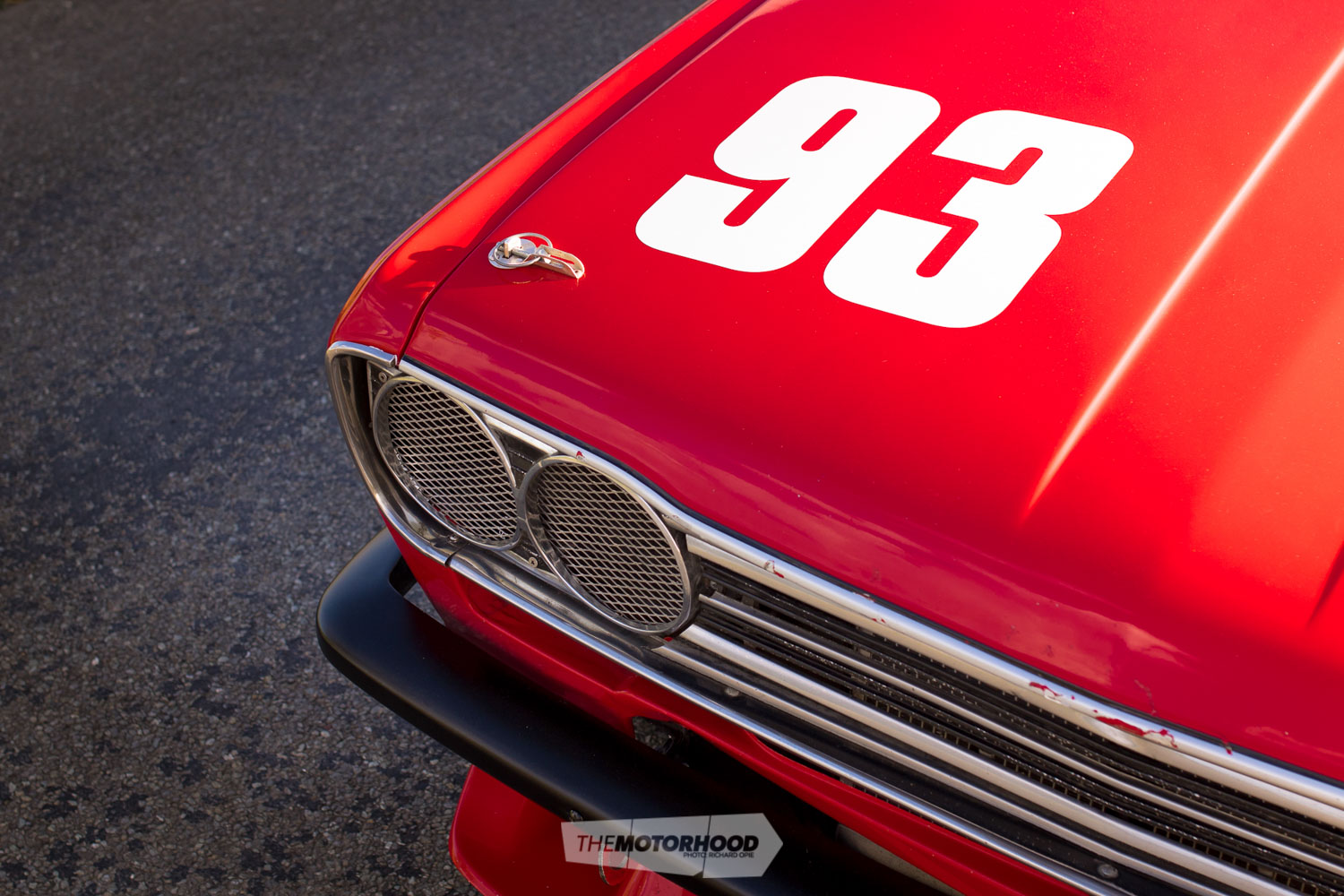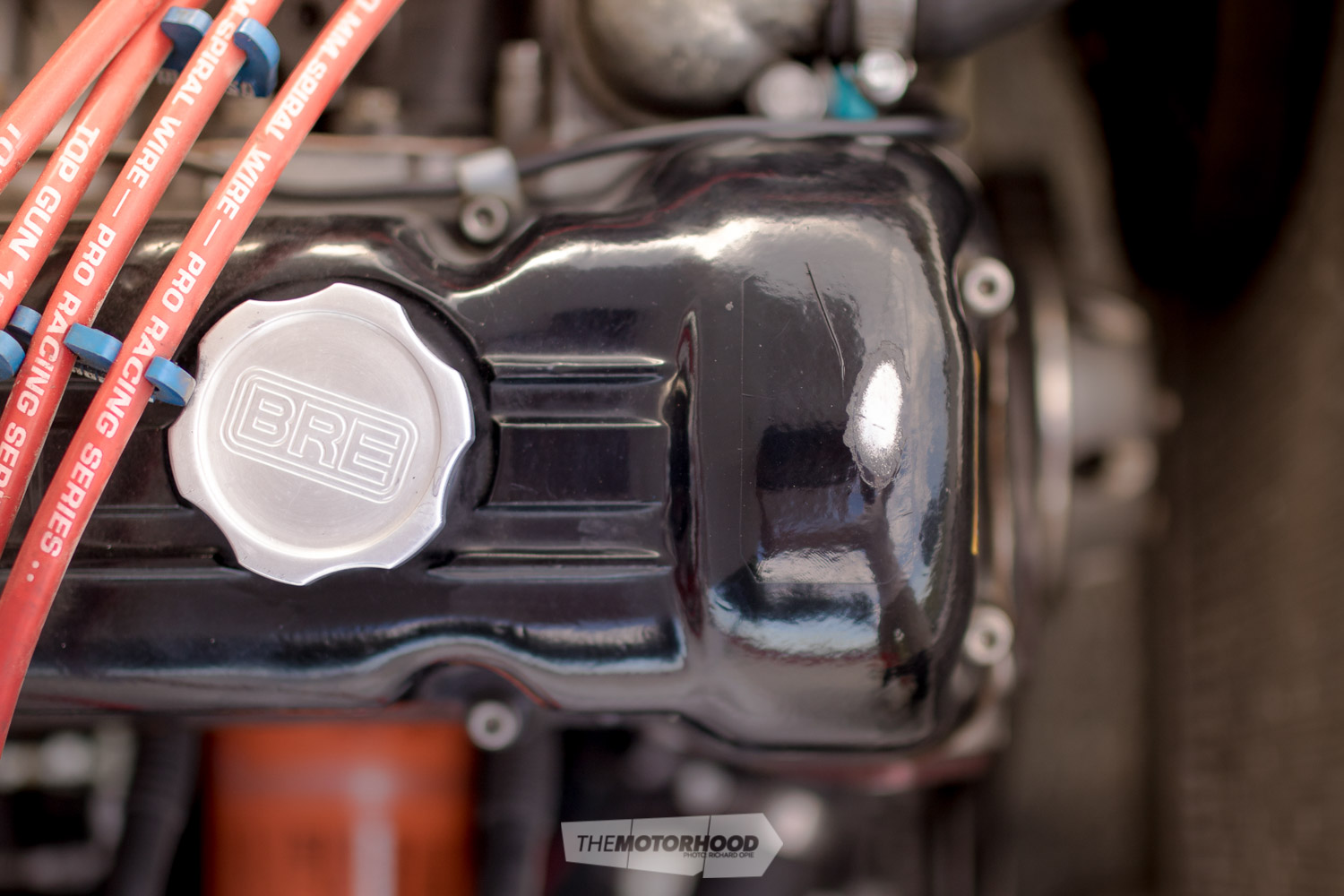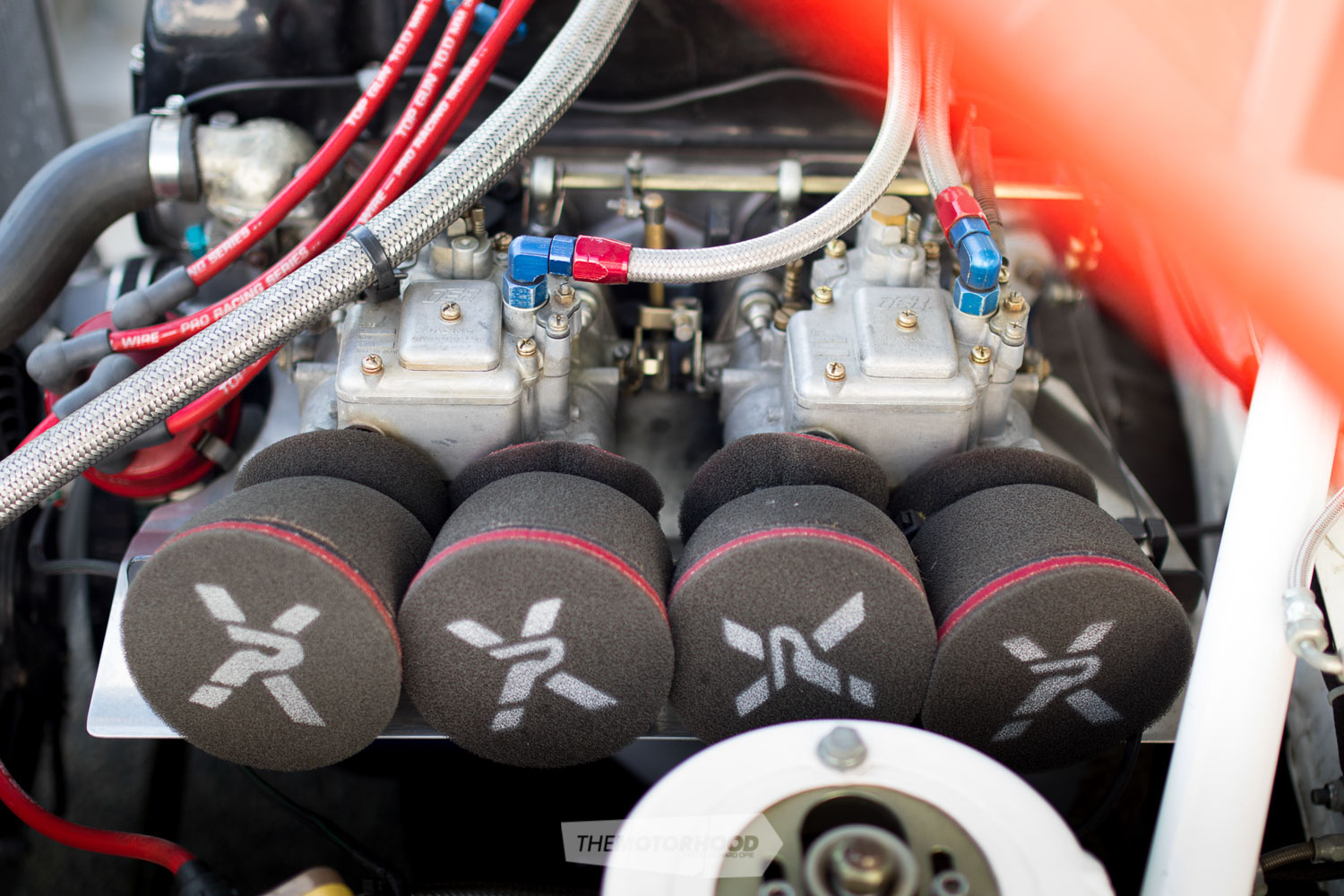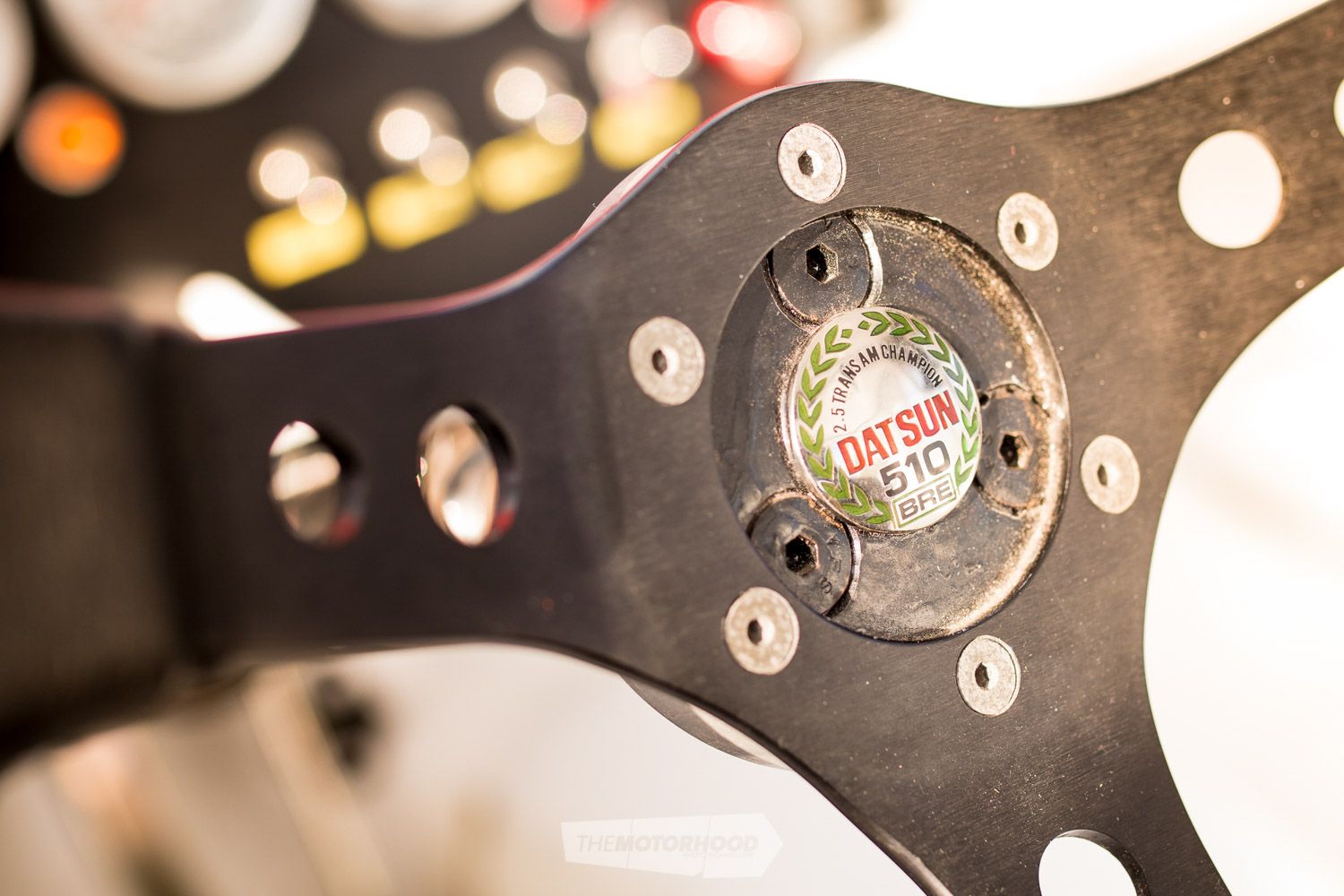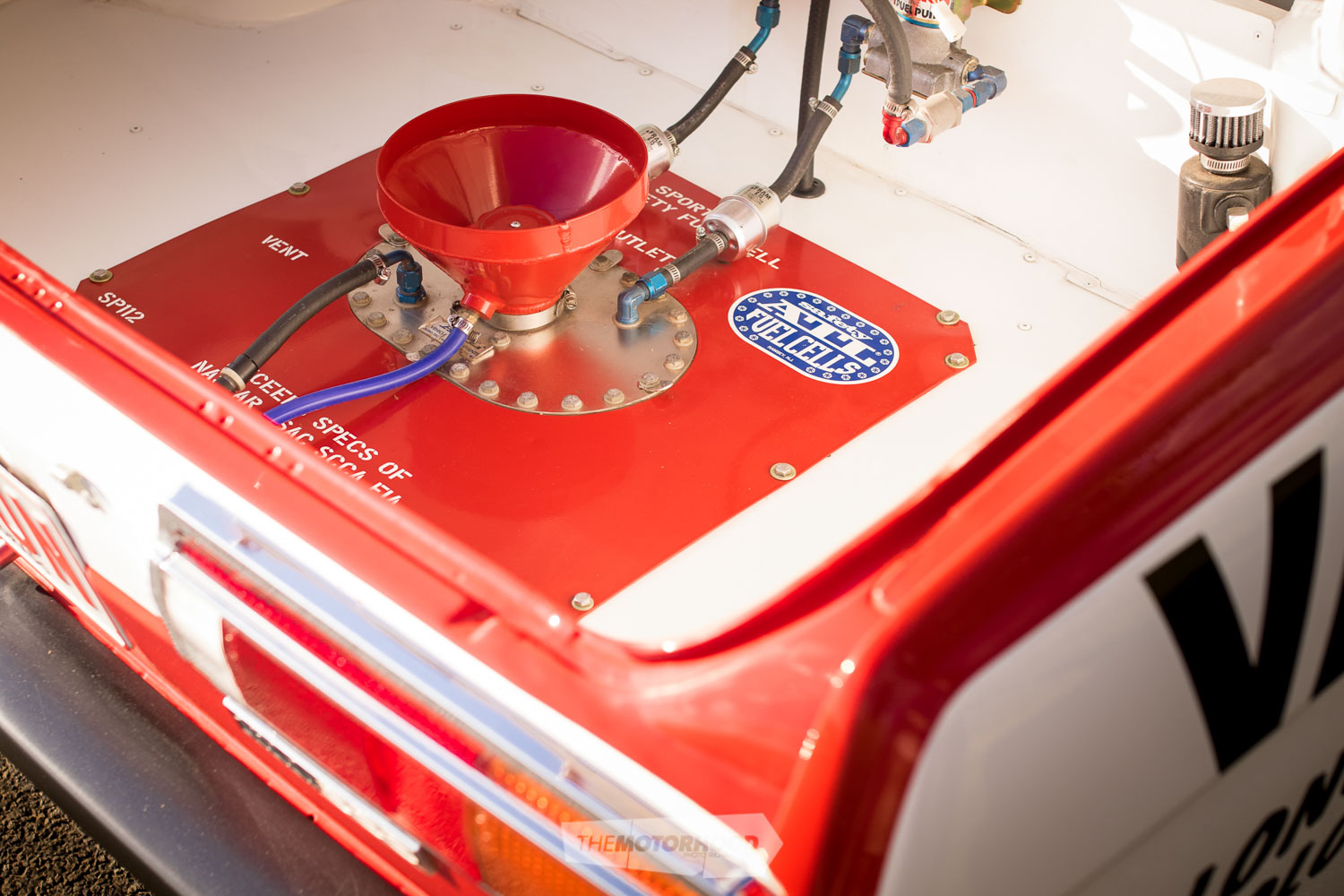Built 45 years ago in the Southern US, and now a Southern Canterbury resident, Richard Brown’s real-deal Datsun 510 two-door race car represents the continuation of a generation-spanning motorsport addiction
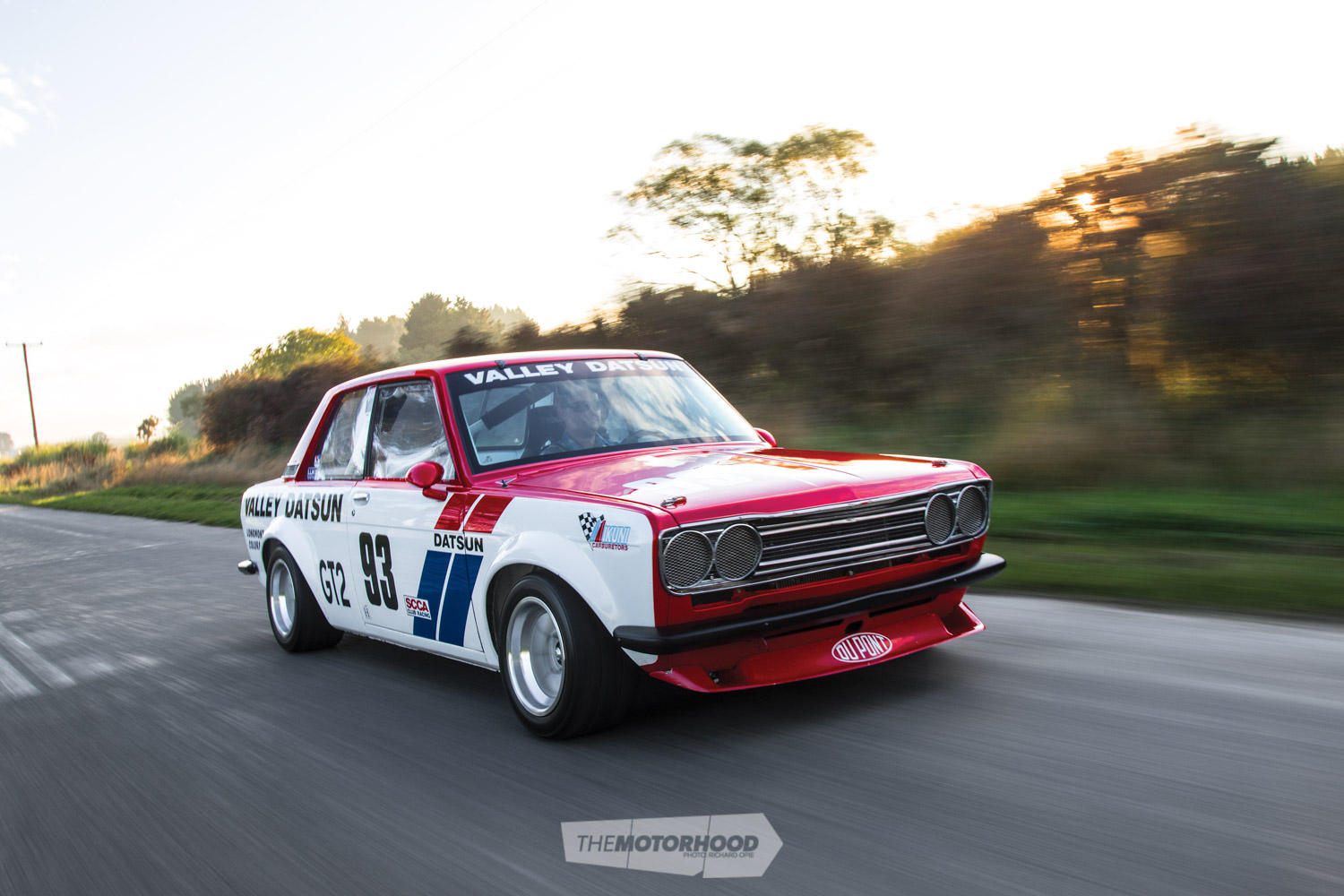
It’s a slightly cool but completely pleasant afternoon among the rolling plains somewhere south of Timaru. Idyllic, serene — pick whatever adjective you like. Hell, the aroma of freshly cut grass even hangs about in the late afternoon air, as the sun drops closer to the horizon by the second. Everything is pretty damn all right with the world, as Richard Brown clambers over the door bar and slouches into the Racetech bucket of his striking little Datsun 510 two-door race car.
But forget the tranquil setting; the moment that starter button is pressed, it all changes. The clunk of the starter solenoid, the unmistakable whizz of a reduction-gear starter, and the grumpy L-series four-pot hammers into life … well, almost. In the way that only a highly strung nostalgia race machine can manage, the Datsun splutters, vibrates, then promptly shuts itself down. But the second time around, the crackle from the stainless exhaust prevails, the sound permeating the still autumn air.
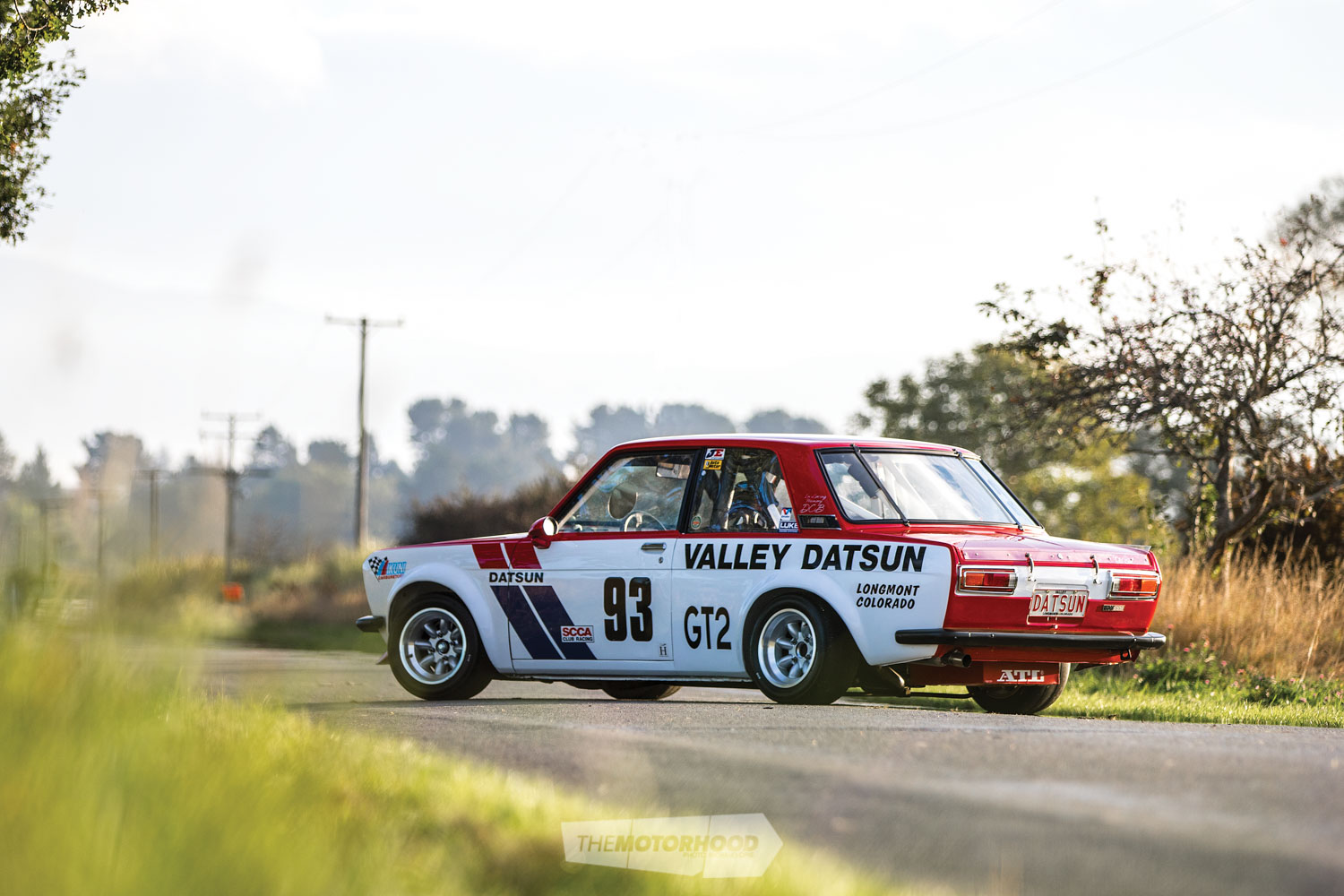
The Datsun originally ran an angry 1.6-litre L16, which Richard describes as a bit of a pig on the tighter Kiwi tracks due to the huge cam, 40mm Mikuni carbs, and a power band from 6500rpm upwards
Historically significant the Datsun may be, but, for Richard, the personal connection he feels when owning and campaigning such a car is undoubtedly more important. He was born to a father already afflicted with a thirst for all-things automotive and fast, and his earliest memory involves high-revving madness as he clung to the roll cage of his dad David’s Datsun 1600 rally car. The Datsun had a 4.4-litre V8 under the bonnet, and Richard recalls urging his dad to “make the stones hit the power lines”, while he peered out the rear screen.
It probably doesn’t come as a huge surprise to hear that the senior member of the Brown family was addicted to cars of the Nissan/Datsun variety. Up to and throughout the ’80s, David held numerous hill-climb and rallysprint records, usually at the helm of a Datsun. Whether it was a 1600, 1200, 120Y, or a 160J, if it was a Datsun and he had the opportunity to chuck some stones from the treads, Richard’s old man was giving it a crack.
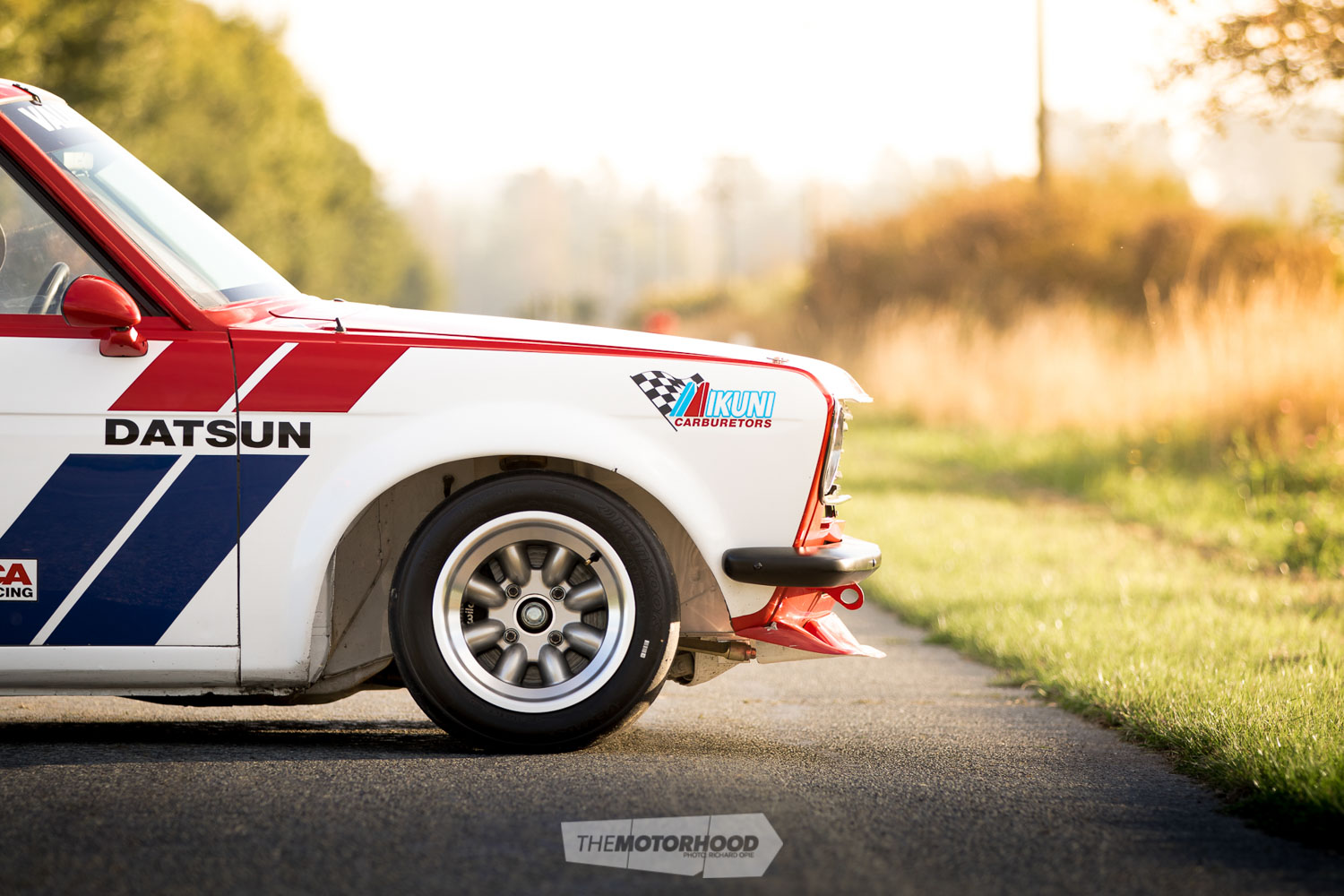
The Brown family name essentially became a synonym for motorsport. Richard and his brother Andrew both became involved in racing and crewing, the latter working his way through the likes of Monster Tajima’s Japan-based enterprise, as well as M-Sport’s Ford World Rally Championship team. And while David had briefly stopped competing to get his lads started on the motorsport ladder, in 2000, the sale of the ex–Reg Cook Datsun 100A Cherry caught his attention.
Campaigned by Cook from 1976 to 1978, the Nissan works-built Cherry dominated New Zealand Shellsport competition. On its competitive retirement, it stayed in New Zealand, the only works-prepared Nissan competition car to be exported from Japan and not return. David subsequently purchased the Cherry at auction, much to the amusement of the Brown clan, who dismissed it as “the ugliest Datsun ever built”. Two-and-a-half years of restoration later, and it was, “still ugly but immaculate — and a wee bit cool,” Richard says. And it had set the Brown family on a classic racing crusade, so, in 2005, Brown Senior decided another project was in order. Like so many projects, eBay played a huge part. Located in Waco, Texas, the 1600 (or 510 in US-market terms) looked like a good bet. Emails flew across the globe before a deal was reached and the fateful buy-now button was clicked.
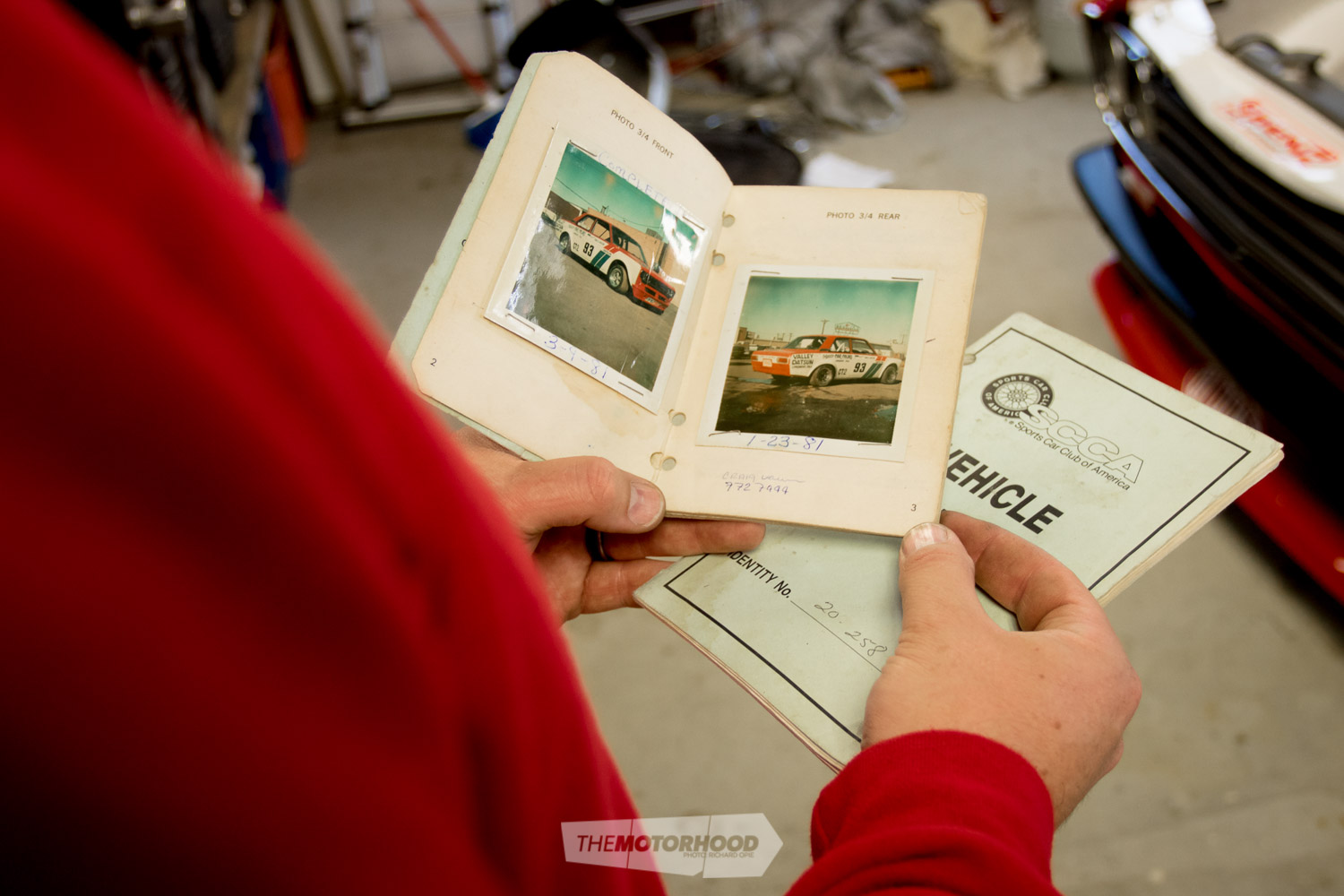
Back in ’72 it was pieced together using only the best components, that’s why underneath you will find an array of adjustable billet arms, along with adjustable blade-type sway bars
The Datsun landed at Tauranga, wedged into a shipping container with spare parts and a couple of other cars, so Richard’s dad trekked north to pick up his new-found treasure. His first sight of the Datsun stirred the emotions, although maybe not as intended. Elation and excitement? Try despair and disappointment. Although everything was present as described, the Datsun was somewhat the worse for wear, with paint that “looked like it had been sprayed by a blind man on a beach in a nor’wester” coating panels that were, to put it mildly, wobbly.
What they did have, though, was a racing Datsun with proper history. This chassis had been pieced together in 1972, by Valley Datsun Racing in Longmont, Colorado. Designated chassis No. 003, the car was a reborn build of the team’s first car, which had been written off in competition. With parts also obtained from Paul Newman’s Datsun team, the Datsun competed throughout the US in the 1970s, in the Sports Car Club of America (SCCA) Under 2.5-litre championship. That was a known stomping ground of the Datsun 510, and this particular car came away with a swag of race wins, as well as a state championship.
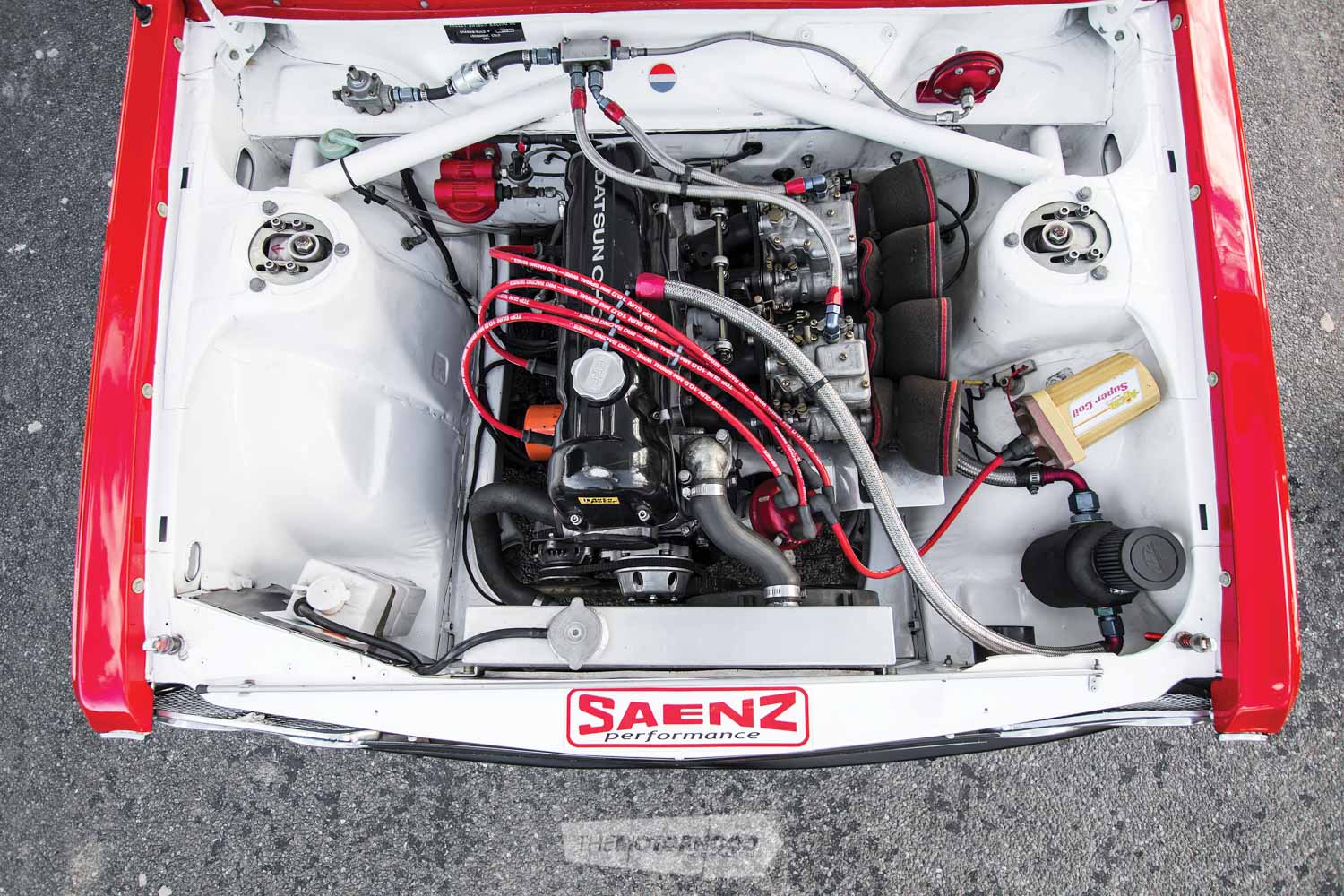
The goal was to recreate the car’s past glory, so it was strung up on a rotisserie and assessed, before a two-year restoration got underway. Removing the heavy 3mm steam-pipe cage was a priority, and it was replaced by a compliant roll cage still consistent with the period style of the car. Fibreglass (FRP) panels were substituted for steel, as per 1970s SCCA GT2 specification. Paul Mason of Elite Collision repairs massaged the panels straight, and Grant Goodall coated the shell in the iconic Datsun motorsport livery. As the original 1970s logbooks were on hand, matching the livery was easy, and the end result is a period-perfect aesthetic.
Surprisingly, Richard explains that apart for some updated spring rates and Koni shock valving, the chassis set-up is exactly as it was in the ’70s — albeit, now all clean enough to eat off. The car is kept so clean that the exterior has never seen a wet wash. Between races, Richard’s wife, Tash, helps crew, which includes keeping the car spotless at all times. Immaculate is an understatement when talking about Richard’s dad’s attention to detail. Inside, there’s barely even a mark on the floorpan of the white cabin, and only the necessities in place, like an array of Auto Meter gauges, a simple shifter rising from the tunnel, and a period steering wheel to celebrate the Datsun 510’s success in the 1970s.
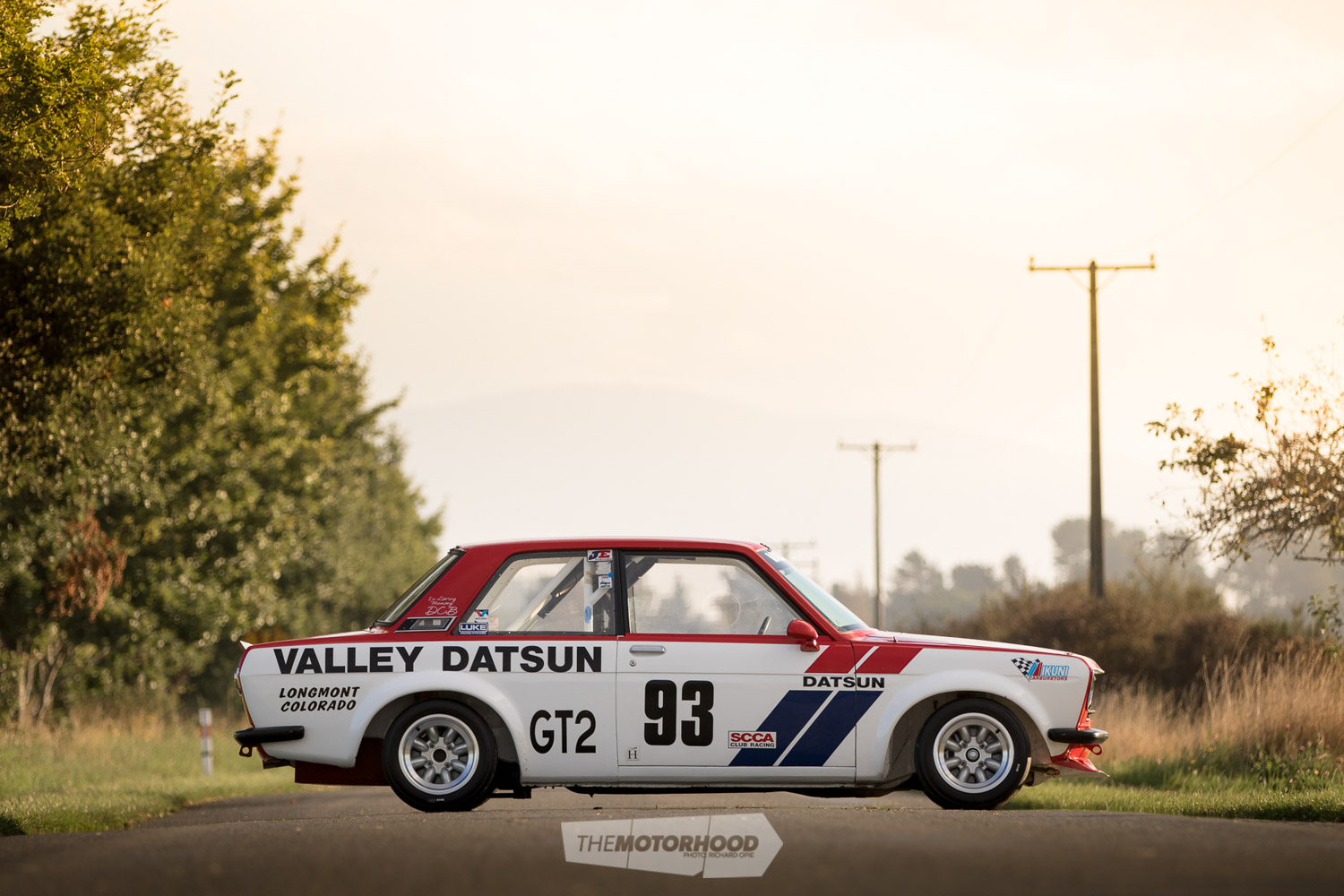
This 510 is itself a celebration, a celebration of the Brown family’s dedication to motorsport, particularly to the red, white, and blue of Datsun. But it’s also a celebration of David Brown’s life, sadly cut short on the tarmac of Levels Raceway in February 2010. Richard was on track that day, starting off the back row alongside his old man. David was at the wheel of the Cherry, while Richard sat in the 510, both waiting for the green light. Before the first corner, David had thrashed his son, and had over half the field behind the little Cherry. It’s a heart-wrenching story, as Richard describes seeing his dad’s Cherry buried in the turn-one tyre wall. A lap later, it was still buried, and his dad was still in the car. As it turned out, David had had a heart attack, and emergency services descended on the little Datsun.
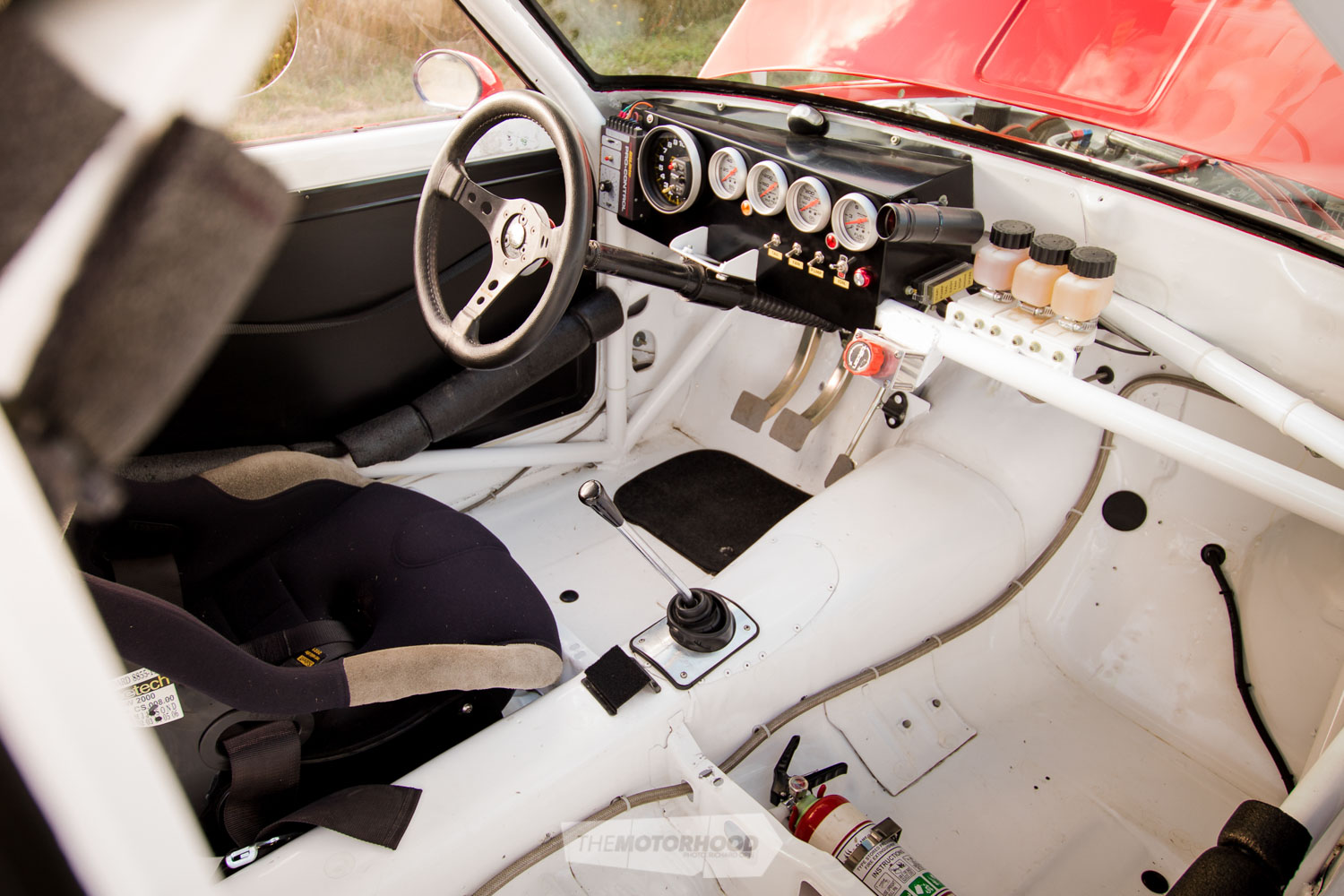
Swapping gears is done via a period Nissan five-speed with Nismo close-ratio straight-cut gears
It’s a sad way to end a yarn about a car and its passionate motorsport family. But, while David’s passing hit the entire Brown family hard, Richard and the Datsun are still on track: he’s racing in his father’s memory, fending off “f*cking Alfas” and building a Datsun legacy of his own for his three young boys. They’re already getting involved in the Brown family track trade — and what better way is there to impart the emotive, nostalgic, and family values that only a historic race car can provide?
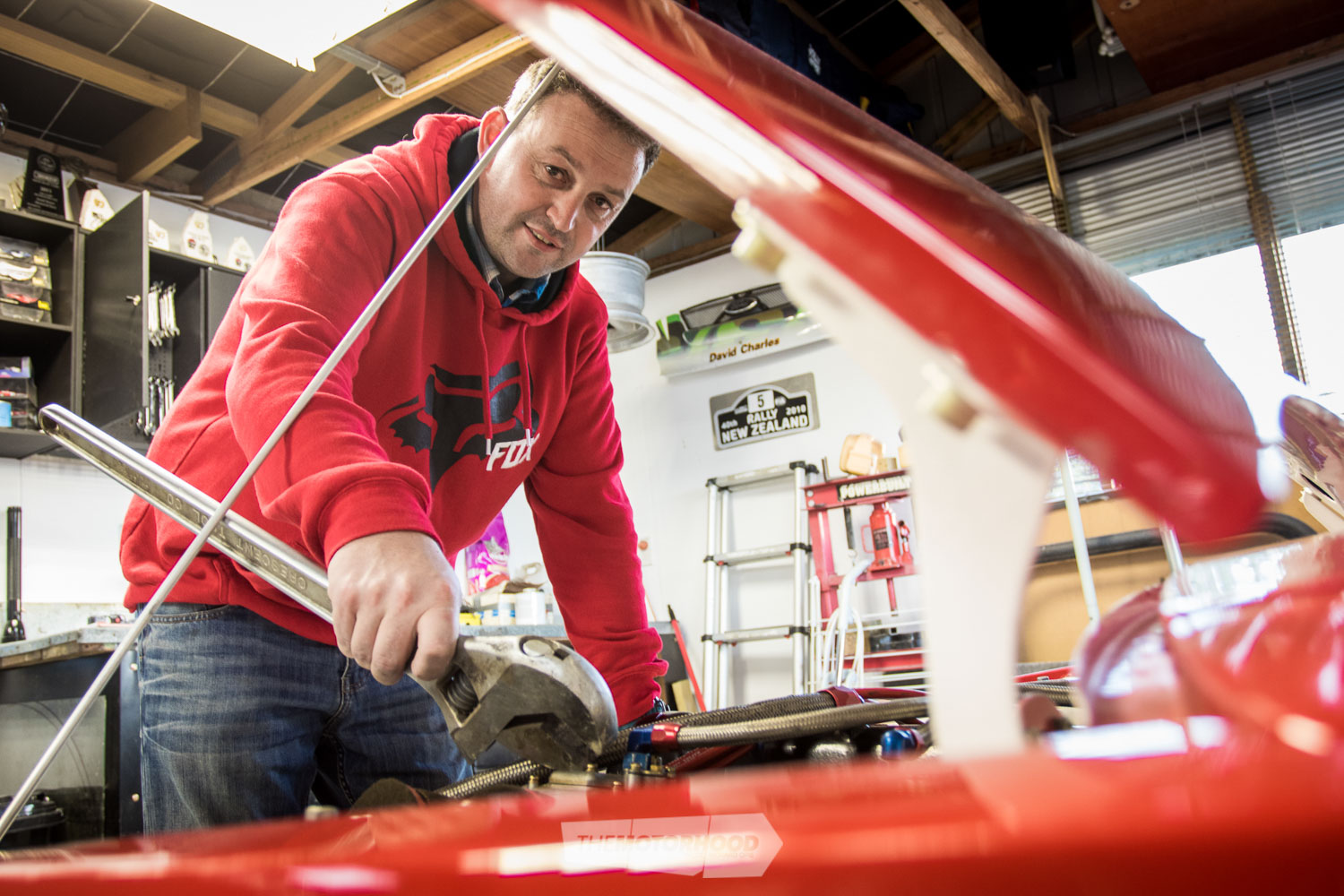
Richard Brown
Age: 40
Location: Timaru
Occupation: Car wrecker
Build time: Two years
Length of ownership: 12 years
Thanks: My dad, David Brown; Grant Goodall; Paul Mason; Resene Timaru; and my wife, Natasha Brown
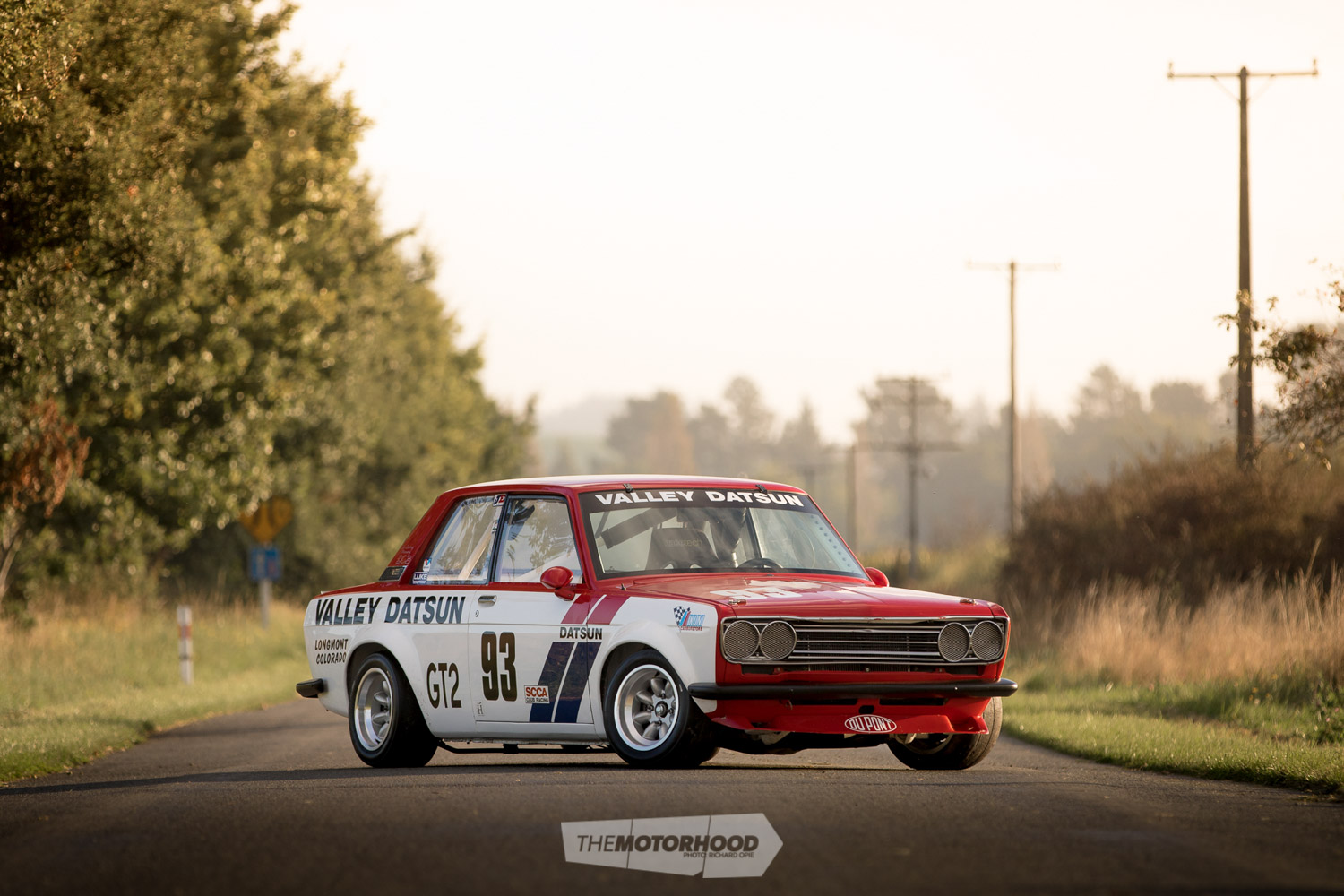
Heart
ENGINE: Datsun L20B, 2000cc, four-cylinder
BLOCK: Z20 block, JE pistons, Saenz rods, balanced and knife-edged crank
HEAD: Race-prepped L16 head by Slova Engineering USA, Iskenderian Racing Cams cam
INTAKE: OER 45mm carbs
EXHAUST: Stainless, custom headers
FUEL: ATL fuel cell, dual Holley pumps
IGNITION: Mallory electronic
COOLING: Alloy radiator
Driveline
GEARBOX: Nissan dog-leg five-speed, Nismo Option 2 close-ratio straight-cut gear set
CLUTCH: Single-plate
FLYWHEEL: Lightweight chromoly
DIFF: Nismo limited-slip
Support
STRUTS: Koni adjustable, Eibach springs
BRAKES: Tilton adjustable pedal box; (F) Wilwood four-pot calipers, Wilwood 260x19mm rotors; (R) Wilwood four-pot calipers, Wilwood 260x19mm rotors
OTHER: Adjustable billet lower control arms (LCAs), adjustable billet caster rods, modified cross members, modified rear LCAs, seam-welded chassis, eight-point roll cage, tubbed rear end, adjustable blade sway bars
Shoes
WHEELS: 13×8-inch Performance Wheels Superlite
TYRES: 225/45R13
Hankook Ventus Z214
Exterior
PAINT: Nissan red and white by Grant Goodall at Elite Transport Refinishers
ENHANCEMENTS: Fibre-reinforced-plastic (FRP) panels, flares, and splitter; panel work by Paul Mason at Elite Collision Repairs; original Valley Datsun race livery
Interior
SEATS: Racetech 4000
STEERING WHEEL: Quick-release hub
INSTRUMENTATION: Auto Meter
Performance
POWER: “Enough”
This article originally appeared in NZ Performance Car issue No. 246 — you can purchase a print copy or digital copy at the links below:
